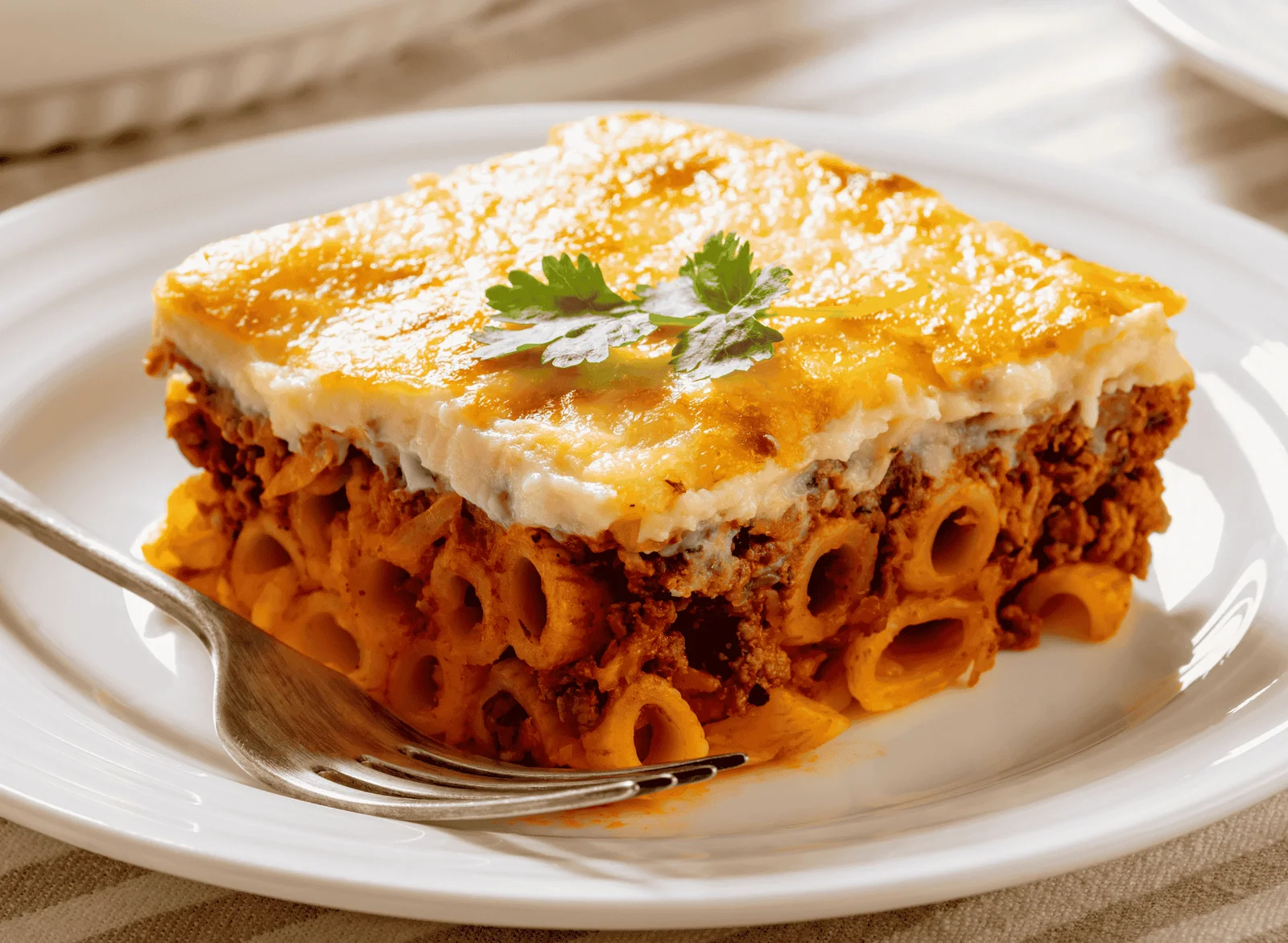mchec.org – Pastitsio is a beloved Greek dish that combines layers of pasta, a savory meat sauce, and creamy béchamel topping to create a comforting and hearty meal. Often compared to lasagna, pastitsio has its own unique character, distinguished by its Mediterranean flavors and rich textures. This baked pasta dish is a staple in Greek cuisine, enjoyed by families and at festive gatherings alike.
The Origins of Pastitsio
The origins of pastitsio can be traced back to the culinary traditions of Italy and Greece, with influences from the Middle East as well. The dish’s name comes from the Italian word “pasticcio,” meaning a pie or a mess, which reflects its layered, casserole-like structure. Over time, the recipe was adapted to incorporate local Greek ingredients and flavors, evolving into the version we know today.
Key Ingredients
Pasta
The base of pastitsio is typically a tubular pasta like bucatini or penne, which holds up well during baking and provides a satisfying texture. The pasta is cooked and then layered with the meat sauce, forming the foundation of the dish.
Meat Sauce
Pastitsio features a rich and flavorful meat sauce, often made with ground beef or lamb. The sauce is cooked with onions, garlic, tomatoes, and a blend of spices such as cinnamon, allspice, and nutmeg, which give it a warm and aromatic quality. A splash of red wine is sometimes added for depth.
Béchamel Sauce
The hallmark of pastitsio is its luxurious béchamel sauce, which forms the top layer. Made from butter, flour, and milk, this creamy sauce is often enriched with eggs and cheese, creating a golden, velvety finish when baked.
The Art of Layering
Assembling pastitsio is a process of creating harmonious layers. The dish begins with a layer of cooked pasta, followed by a generous portion of the meat sauce. Another layer of pasta is added, and the dish is topped with a thick layer of béchamel sauce. The pastitsio is then baked until the top is golden and bubbling, allowing the flavors to meld together into a cohesive whole.
Variations and Regional Differences
While the classic version of pastitsio is well-known, there are variations across different regions and households. Some recipes include additional ingredients such as mushrooms, bell peppers, or spinach. The choice of cheese can also vary, with options like kefalotyri or Parmesan adding their distinct flavors.
Serving Suggestions
Pastitsio is often served as a main course, accompanied by a simple salad and a glass of robust red wine. Its rich and filling nature makes it perfect for family dinners or special occasions. Once baked, it is best allowed to cool slightly before serving, which helps the layers set and makes for easier slicing.
Conclusion
Pastitsio is a testament to the rich culinary traditions of Greece, offering a delicious blend of flavors and textures that are both comforting and satisfying. Its layered composition and distinctive taste make it a favorite among pasta lovers and a staple of Greek cuisine. Whether enjoyed as a weekday meal or a festive feast, pastitsio brings a taste of Greece to any table, celebrating the art of hearty, home-cooked food.



